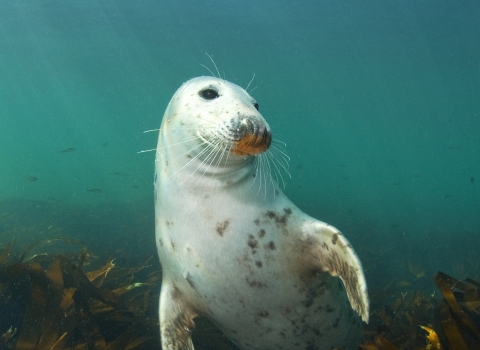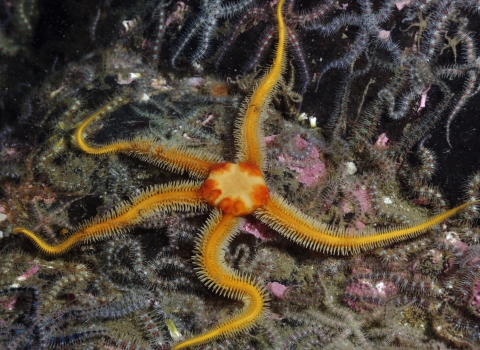What are Marine Conservation Zones?
Marine Conservation Zones are protected areas of sea where human activity is more strictly managed to protect marine wildlife.
The Government is creating Marine Conservation Zones (MCZs) in the seas around England, following the passing of the Marine & Coastal Access Act (2009). These ‘zones’ will allow sustainable use of the sea whilst protecting a range of species and habitats found in English waters from damaging activity.
There are currently only 50 MCZs in place across England representing part of a 'blue belt' around UK seas.
We are in the midst of the most crucial period in history for the UK's marine life. We
have an opportunity to turn an environment filled with ravaged habitats, depleted fish stocks
and struggling species into Living Seas - pulsating with life, supporting livelihoods,
continuing to be a source of joy and wonder to us all.
President of The Wildlife Trusts
Lincolnshire's proposed Marine Conservation Zones
Take a look at the factfiles below for more information on some of our proposed North Sea MCZs.

Alexander Mustard/2020VISION
Dogs Head Sandbanks
The Inner and Outer Dogs Head is located in the mouth of the Wash. The intertidal sand banks here rise up to three metres high. Common seals haul out to rest and to give birth to their pups and the little terns that nest at Gibraltar Point fish for sand eels in the shallows.

Paul Naylor http://www.marinephoto.co.uk/
Lincs Belt
The Lincolnshire Belt stretches 35km from the Humber Channel to Anderby Creek, from the low tideline out to sea 5.5km (3 nautical miles). It is also a post-glacial landscape with cliffs of clay and peat, and sunken forests. These solid structures in the shifting sands form a substrate for sessile animals such as sea anemones and provide shelter for fish.

Linda Pitkin/2020VISION
Silver Pit
The Silver Pit is a deep glacial channel dating back ten thousand years when, during the Ice Age, much of the North Sea was dry land. Today, it’s considered depleted and in need of action to aid recovery.

Lara Howe
The Wash Approach
The Wash Approach covers an area of nearly 1000km2 (nearly twice the size of the Lincolnshire Wolds AONB). It has one of the highest species diversities in the North Sea. Animals found here include worms, bivalves including the incredibly long lived ocean quahog, starfish and urchins, anemones, sea firs and sea mats.

